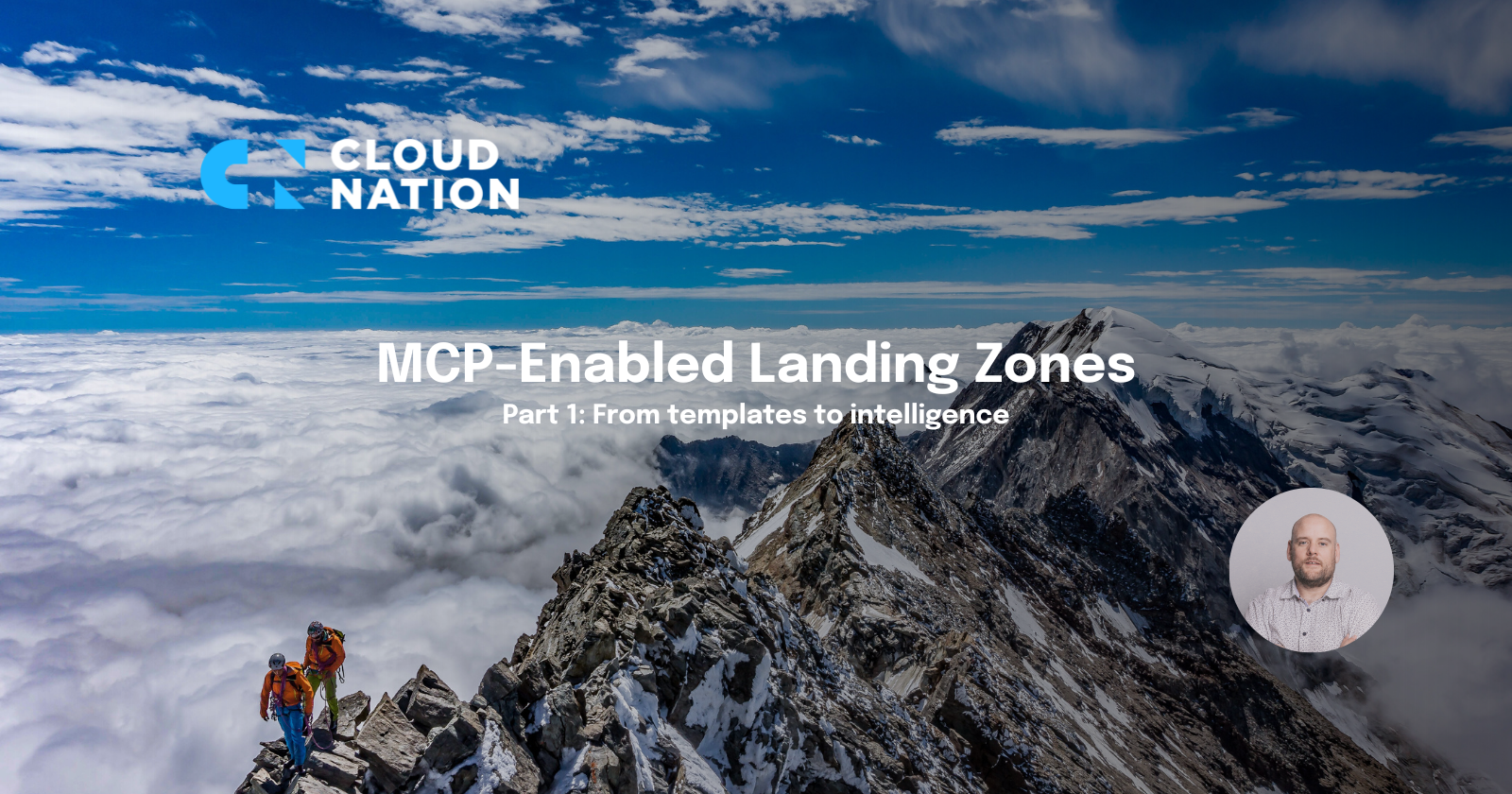This shift challenges leaders to rethink governance not as control, but as code.
The era of static cloud foundations is over
Where organizations once relied on carefully crafted templates and manual management, modern cloud environments demand something different: intelligence, agility, and adaptability.
Landing zones have matured. And within the Microsoft Cloud Partner (MCP) ecosystem, a new generation is emerging, MCP-enabled landing zones, designed to understand, improve, and guide themselves.
The old world: Predictable, but limited
Traditionally, landing zones were the starting point for every cloud environment, a set of templates covering networks, policies, identity, and security. They offered stability and consistency, until the business asked for something new.
Then came the familiar cycle: rewriting templates, breaking dependencies, testing, redeploying. What once seemed efficient turned out to be slow, error-prone, and difficult to scale.
The result: a foundation that felt more like concrete than building blocks.
The MCP approach: Standardization as an accelerator
With the rise of the Microsoft Cloud Partner program, that foundation has been redefined. MCP-enabled landing zones combine standardized best practices, governance, and security into a single, cohesive framework.
This delivers:
- Faster adoption of Azure environments
- Consistent compliance with Microsoft’s guidelines
- Automated updates as cloud services evolve
- But standardization isn’t the finish line, it’s the launchpad for something greater.
From templates to intelligence
The next step in this evolution is the introduction of intelligence. Not necessarily artificial intelligence, but systemic awareness, a deep understanding of what the organization needs.
An intelligent landing zone:
- Recognizes context, for example, whether a workload is production-ready or experimental.
- Automatically applies policies, tagging, and governance.
- Scales resources up or down based on behavior and usage patterns.
- Instead of a static design, an intelligent landing zone becomes a living ecosystem that adapts as the business evolves.
The CloudNation vision
At CloudNation, we don’t view MCP-enabled landing zones as end products, but as intelligent foundations that move in sync with business strategy. We combine Microsoft’s standards with our own automation and governance layer, making landing zones not just cloud-ready, but business-aware.
The question is no longer how you build a landing zone, but how smart you want it to be.
The goal isn’t just cloud hygiene, it’s continuous alignment between architecture and organizational intent.
Next step: The brain behind the zone
In Part 2 of this series, we’ll dive deeper into the mechanics behind the intelligence. What drives this behavior? How do modern landing zones decide what’s needed, and when?

.png?width=1600)



